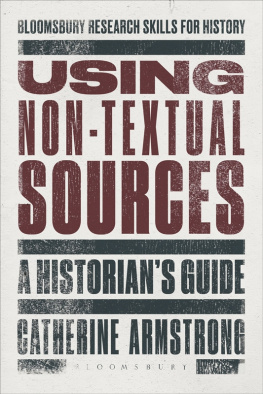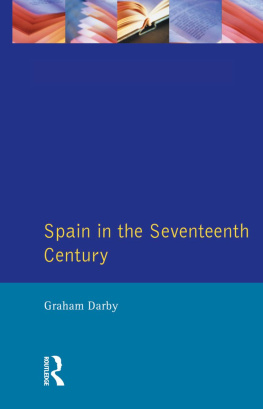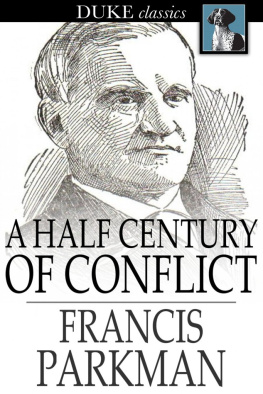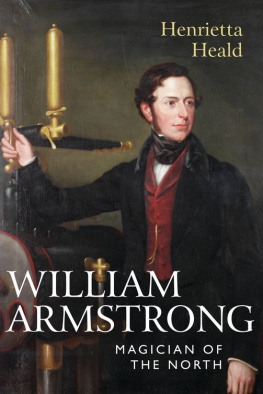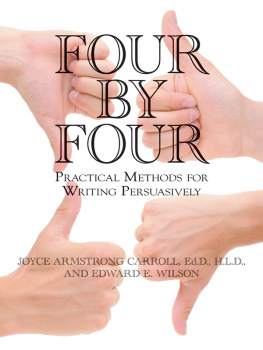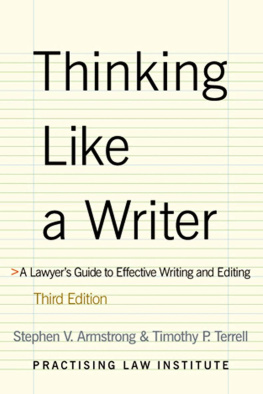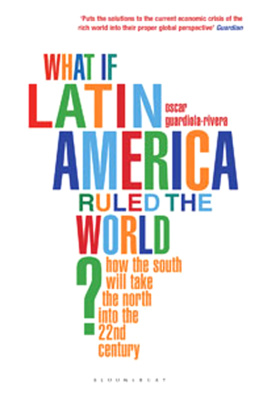Writing North America in the Seventeenth Century
First published 2007 by Ashgate Publishing
Published 2016 by Routledge
2 Park Square, Milton Park, Abingdon, Oxon OX14 4RN
711 Third Avenue, New York, NY 10017, USA
Routledge is an imprint of the Taylor & Francis Group, an informa business
Copyright Catherine Armstrong 2007
Catherine Armstrong has asserted her moral right under the Copyright, Designs and Patents Act, 1988, to be identified as the author of this work.
All rights reserved. No part of this book may be reprinted or reproduced or utilised in any form or by any electronic, mechanical, or other means, now known or hereafter invented, including photocopying and recording, or in any information storage or retrieval system, without permission in writing from the publishers.
Notice:
Product or corporate names may be trademarks or registered trademarks, and are used only for identification and explanation without intent to infringe.
British Library Cataloguing in Publication Data
Armstrong, Catherine
Writing North America in the seventeeth century : English representations in print and
manuscript
1. English literature 17th century History and criticism 2. North America In
literature
I. Title
820.932709032
Library of Congress Cataloging-in-Publication Data
Armstrong, Catherine.
Writing North America in the seventeenth century : English representations in print and
manuscript / by Catherine Armstrong.
p. cm.
Includes bibliographical references (p.) and index.
ISBN 978-0-7546-5700-2 (alk. paper)
1. English prose literature Early modern, 1500-1700 History and criticism. 2. America
Discovery and exploration English Early works to 1800. 3. Geographical discoveries
in literature. 4. Travelers writings, English History and criticism. 5. Voyages and travels
Early works to 1800. 6. Literature and history England History 17th century. 7.
Colonies in literature. I. Title.
PR1293.A76 2007
828.409327dc22
2006101292
ISBN 13: 978-0-7546-5700-2 (hbk)
Contents
This book has its origins in my PhD research at the University of Warwick, so I must first thank my PhD supervisor, Professor Bernard Capp, for all his guidance and encouragement; without him, this project would never have come together. Other colleagues in the History Department at Warwick who have provided invaluable advice or references are Professor Steve Hindle, Professor David Nye, Dr Tim Lockley, Dr Angela McShane-Jones and Mr Tim Reinke-Williams. Professor William Sherman and Professor Emily Rose have kindly read and suggested improvements for individual chapters of this book. My editor at Ashgate, Tom Gray, has provided advice and encouragement, making the task of writing this book a real pleasure.
My thanks also go to the University of Warwick American travel fund and the Virginia Historical Society Andrew Mellon Fellowship Committee and staff for providing me with the opportunity to undertake vital research at the Virginia Historical Society, Richmond, Virginia. The staff of many other institutions have given their time and expertise, namely those at Duke Humfreys Library, Vere Harmsworth Library and Rhodes House Library in Oxford; Friends House Library, Lambeth Palace Library and the British Library in London; Exeter City Archives; Dorset County Record Office, Dorchester; Nottingham University Library; Cheshire and Chester City Archives; Massachusetts Historical Society, Boston, and of course, the University of Warwick Library.
Finally, my gratitude goes to my parents, Maureen and Michael Armstrong, who have tirelessly read and re-read my manuscript and without whose support and encouragement both before and during my university career, this project would not have been possible. And to Mick, who knows how much this work means to me and who has been there for me every step of the way, all my love.
In May 1607 three ships, the Godspeed , the Discovery and the Susan Constant , chartered by the Virginia Company to take a group of settlers to America, arrived at the entrance to Chesapeake Bay. This moment is acknowledged as the start of the permanent English presence on the North American continent and as such has achieved a significance not granted to it at the time. The fledgling colony at Jamestown was much less than a success in the first few years of its existence, and in early summer 1610 was almost abandoned after a winter of cruelty and want left barely sixty survivors, a period that these first Virginians called the starving time. The bedraggled settlers decided to abandon the project and embark for England but they were intercepted by a fleet of relief ships led by Lord De La Warr and persuaded to turn back and try again. De La Warr and Thomas Gates, who became the first effective governor, were made of sterner stuff and laid down a code of law for establishing a civil society in Jamestown. Fortuitously, in 1612, experiments in tobacco cultivation began in earnest and the rest is history. If the beginnings of Jamestown were so inauspicious, why should 1607 be chosen as the date with which to begin a survey of English literature on America, and all previous contact with that continent relegated to this prologue? It would be perverse to argue that because Jamestown emerged as a successful colony, it was always destined to be one, unlike Roanoke or the Brownist attempt in Newfoundland, which for various reasons, were doomed from the start. Focusing on the English contact with the New World in the reign of Elizabeth I it is possible to demonstrate why it is not anachronistic to divide this period of exploration and settlement from that of James Is reign.
While the English during Elizabeths reign failed to establish a permanent settled colony in America, they were certainly not idle. Traders and privateers were establishing England as a presence to be reckoned with on the high seas, and her fishermen were taking a large share of the prizes in the rich cod fisheries of Newfoundland. Explorers were charting the coast and parts of the interior while attempting to discover the elusive Northwest Passage that would be so invaluable in transporting goods from Cathay. For just those reasons, the surveyor Thomas Bavin was instructed to undertake the first English mapping and recording expedition in North America in 1583.
However, it would be a mistake to conclude that the literature written by Elizabethan explorers, settlers and theorists is of no value to the scholar studying English settlements of the period beginning with the foundation of Jamestown. The travel journals, promotional tracts, scientific analyses, poems and pamphlets reveal how the idea of America as a place became a reality in the mentalit of the late Tudor English. This awakening of belief that America could be an area where the English might trade and settle led to the establishment of a lasting colony in the Chesapeake, and the migration of thousands of willing, enthusiastic people to Virginia and later New England.
Writing North America enlarges on the research of scholars of the sixteenth-century Atlantic world. In any textual analysis the historian has to avoid falling into either the post-modernist trap of denying any contextual relevance to a document and thus negating its role as a historical text, or the determinist pitfall of reading something with one eye on the eventual development of a colony into a state, region and nation. In New Worlds, Ancient Texts , Anthony Grafton depicts a radical change when practical observation, as the method of discovery, superseded library learning of the Renaissance classical authors, who had been the only accepted authorities until the turn of the seventeenth century.of this period also attempted to work within a classical framework, for example by fitting the descriptions of newly discovered plants and trees into the system originated centuries before by Galen. Writing North America explores the intellectual framework of Englishmen who were beginning to break free from the confines of classical knowledge.




